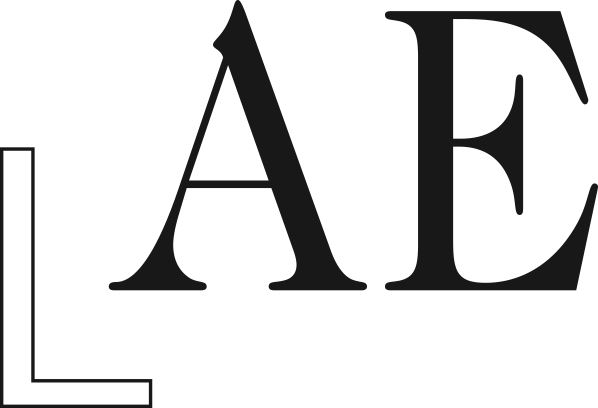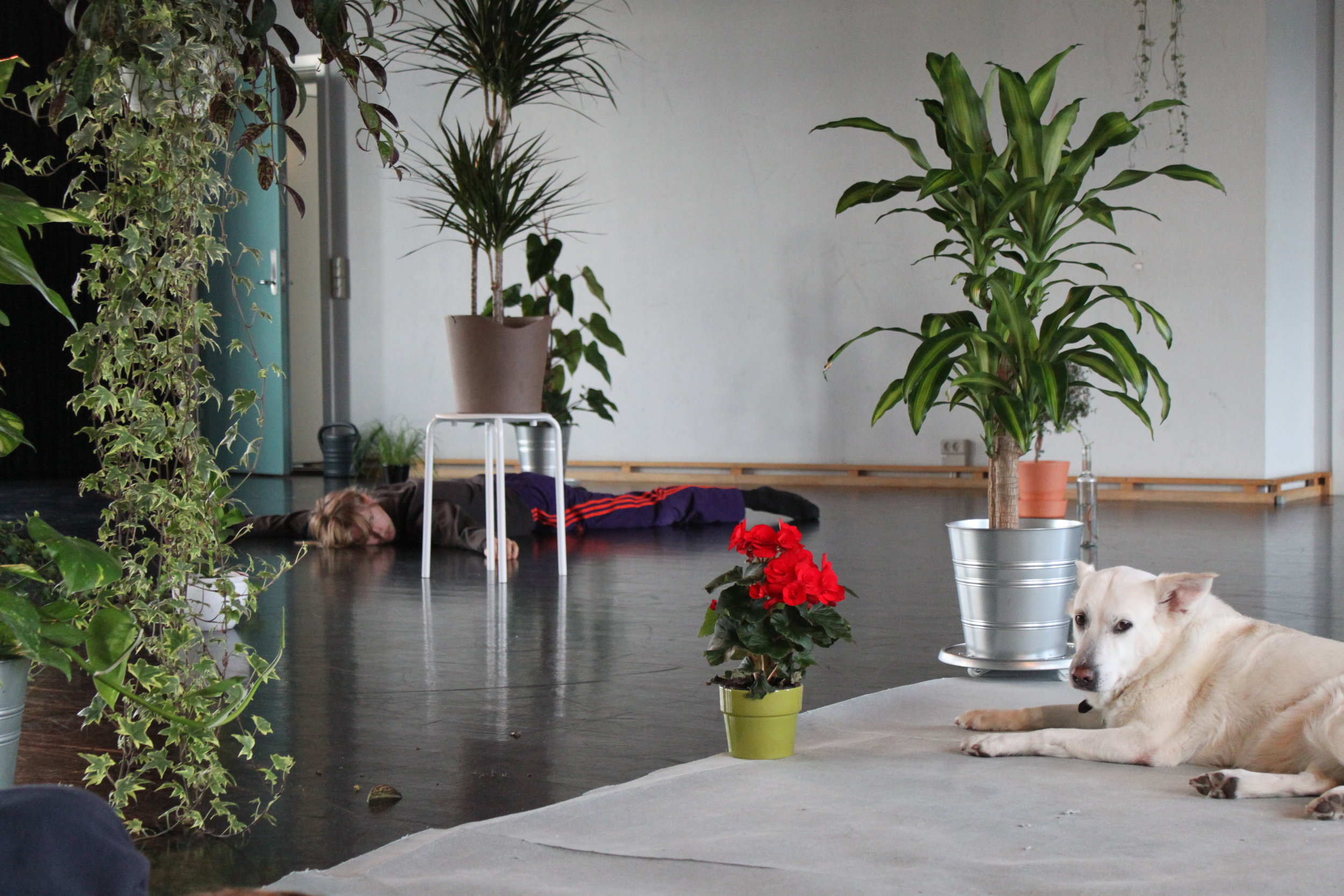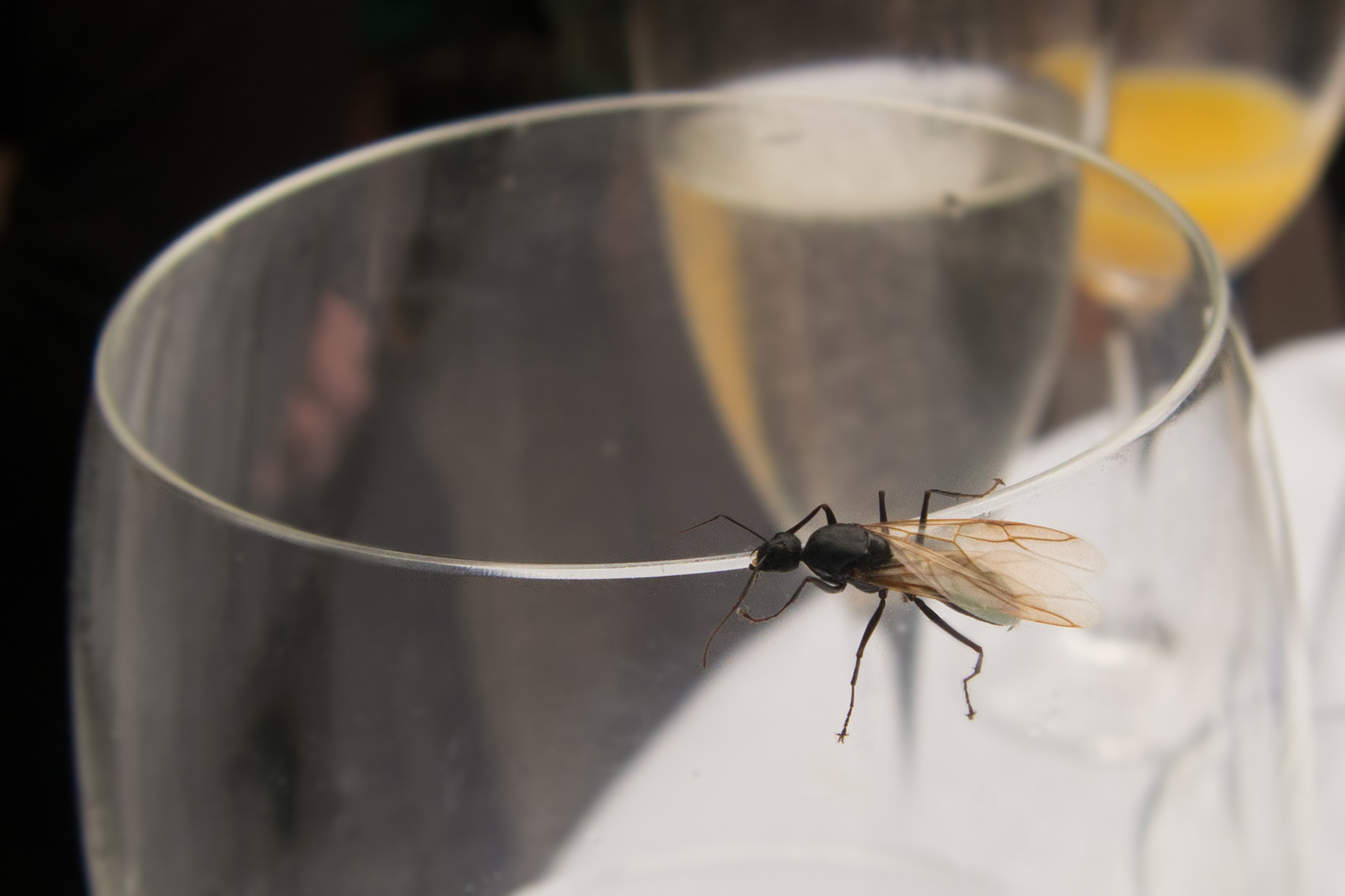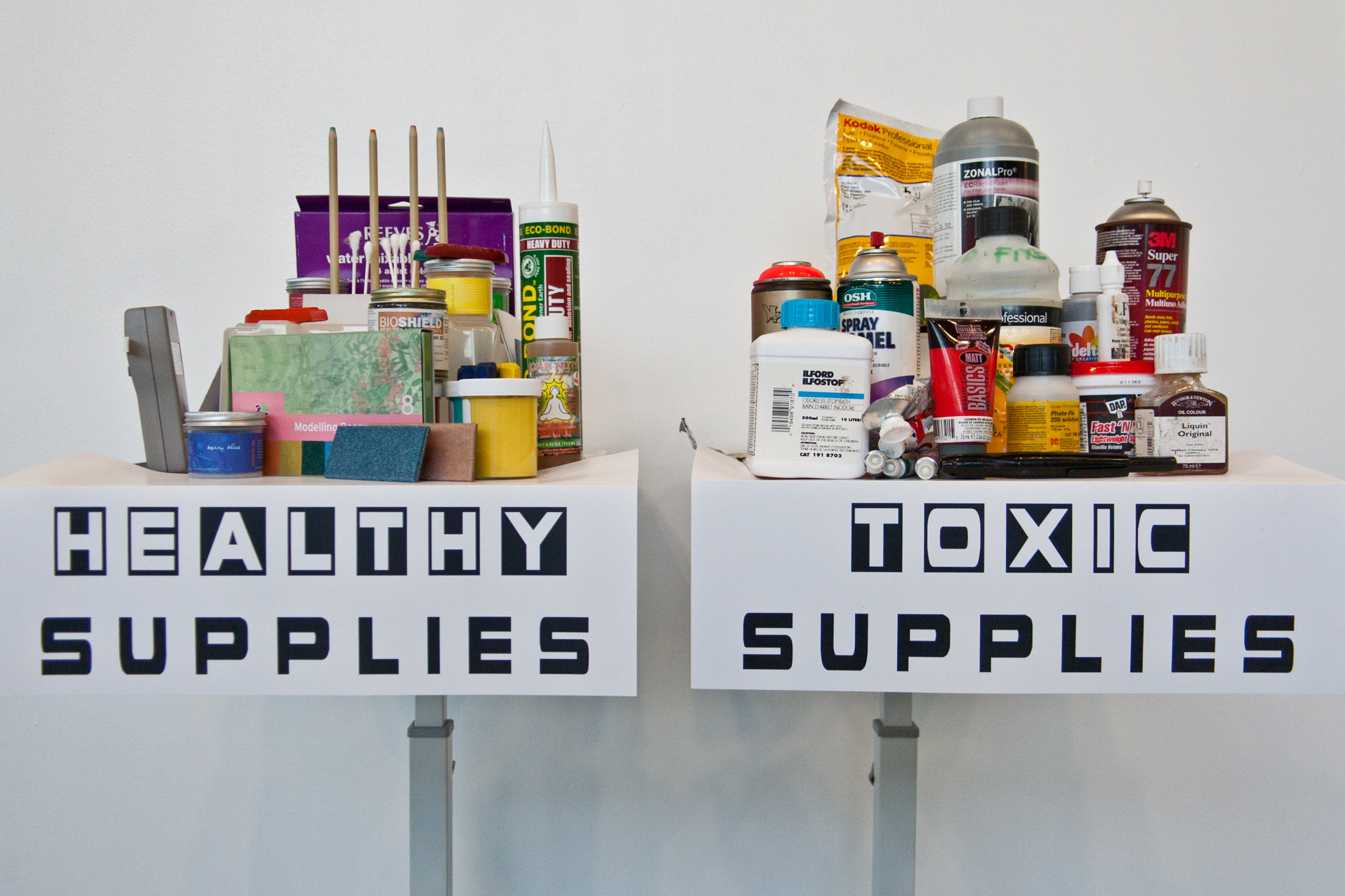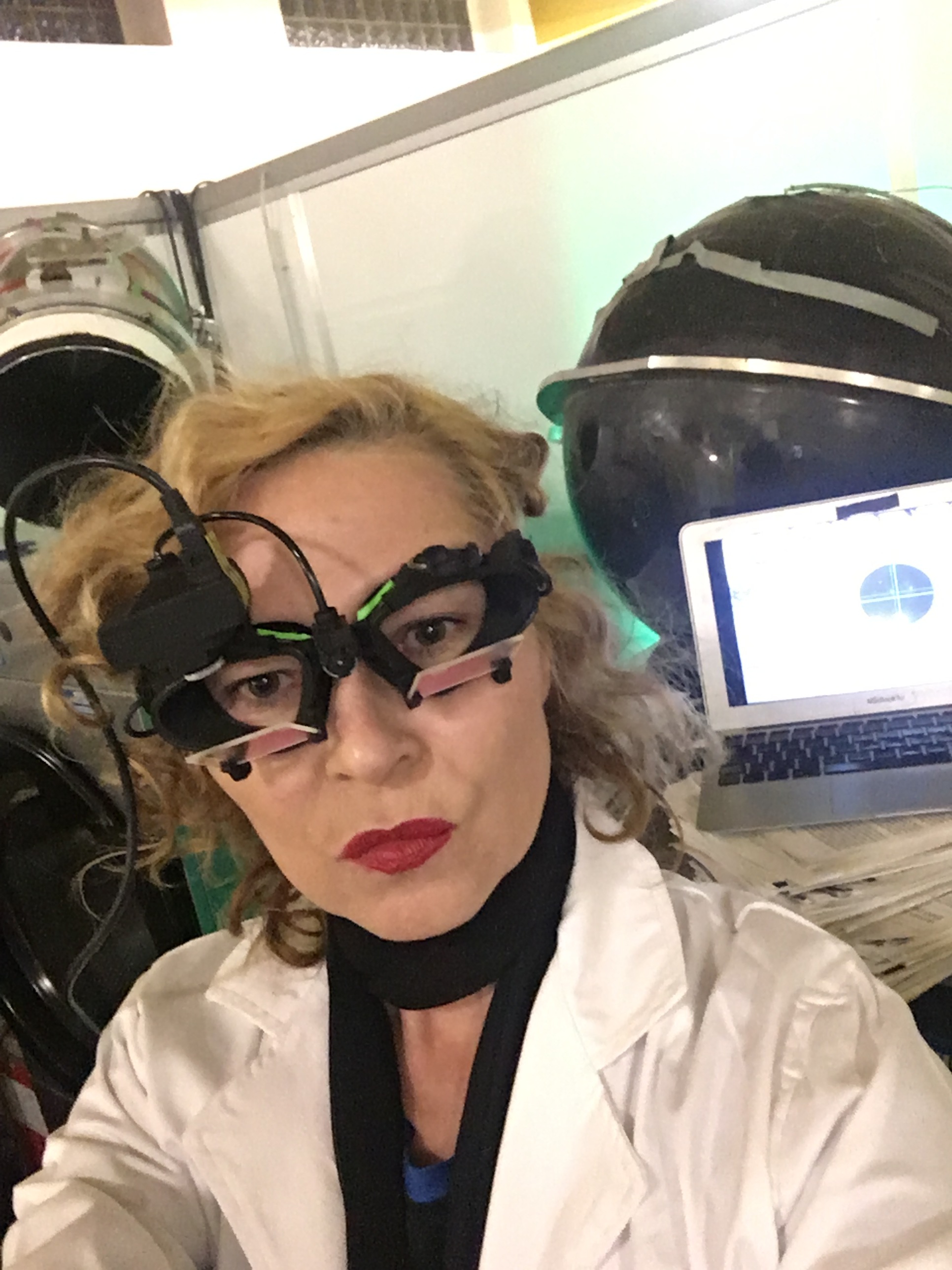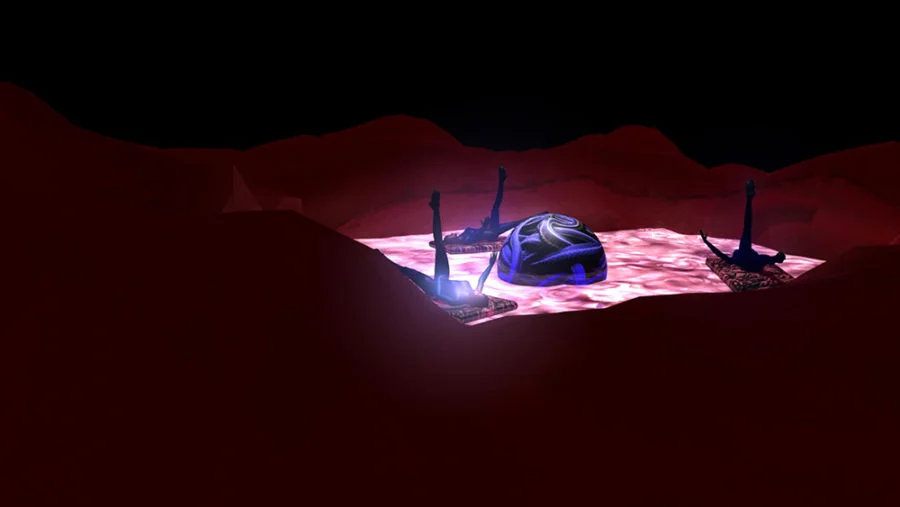SLSA GREEN / ART PROGRAMME
©DANCE FOR PLANTS
This art programme is co-curated by the Laboratory for Aesthetics and Ecology and (OU)VERT: an interdisciplinary mapping of green as medium, with contributions from artists to the conference of the European Society for Literature, Science and the Arts (SLSAeu) on the theme GREEN.
How to define and understand greenness is an urgent political, societal, philosophical and economic question not only in academia – yet there is much confusion about its meanings. Green is often positively connoted. It has become pervasive across a broad range of disciplines, but far from having universal meaning, it marks a dramatic knowledge gap prone to systematic misunderstandings: Engineers brand ‘green technologies’ as ecologically benign, but climate researchers point to the ‘greening of the earth’ itself as the alarming effect of anthropogenic CO2 emissions. ‘Green growth’ aims to reconcile economic and ecologically sustainable development, while in philosophy ‘prismatic ecology’ rebukes the use of green to represent binary ideas of the other-than-human world as an idealized nature. More concept than color, green is often being reduced to a mere metaphor stripped of its material, epistemological and historical referents.
Katrin Petroschkat + Susanne Schmitt / Naja Ryde Ankarfeldt + Amanda Baum + Rose Leahy / Eben Kirksey / Natasha Myers + Ayelen Liberona / Fröydi Laszlo / dance for plants / Andrea Williams / Karine Bonneval / Meredith Drum / Agnes Meyer-Brandis / Rikke Mulvad Mortensen / Paul Harris / Margarete Jahrman + Stefan Glasauer / Quimera Rosa / Mary Maggic
More info and conference programme here: https://green-slsa2018.ku.dk/
Installation and performance documentation (for programme and artists bios, see below)
Biohacking Queer Multispecies: performances and lectures with Quimera Rosa, Mary Maggic and Eben Kirksey at Overgaden, Copenhagen, June 2018
Exhibition at Copenhagen University, Amager
ARTISTS BIOS AND ARTWORKS
Toadstool Emissions by Agnes Meyer-Brandis
In Toadstool Emissions II Agnes Meyer-Brandis uses various means of measurement to investigate gaseous emissions from toadstools. The video recordings and photographs were taken at the SMEAR (Station for Measuring Forest Ecosystem Atmosphere Relations) Forest and Ecological Research Station in Hyytiälä, Finland.
Observation #03 (Tree&Tea) A camera move at the SMEAR (Station for Measuring Forest Ecosystem Atmosphere Relations) Forest and Ecological Research Station in Hyytiälä, Finland.
Agnes Meyer-Brandis studied mineralogy for a year, then transfered to the Art Academy in Maastricht, the Düsseldorf Art Academy and the Cologne Media Art Academy. She comes from a background of both sculpture and new media art. Her work, exhibited worldwide and awarded, is exploring the zone between fact and fiction - an artistic research on the quest for a degree of reality within constructions. www.ffur.de
Green Sound Intervention by Andrea Williams
Sound artist, Andrea Williams, leads participants on a 30-minute soundwalk around the outside of the University of Copenhagen that slows down time and space to observe what is “green” about the immediate environment. A soundwalk is a walk based on listening to the environment. When leading a soundwalk we are combining the perceiver and the perceived, the participant and observer in an improvisatory way in the physical environment. Along with observing others, we immediately get a sense of how our own presence influences our environment. Also, often wonderfully serendipitous things happen when we just slow down and listen.
Andrea Williams utilizes site-specific elements and perceptual cues to reveal the unseen connections between people and their environment. Her compositions make use of field recordings, instruments, computer technologies and the sound of the performance space itself. For the last 15 years, she has led soundwalks based on concepts of acoustic ecology and Deep Listening in NYC, San Francisco, and since 2009 also in people's dreams in the collaborative project called SleepWalks with Lee Pembleton. http://www.listeninglistening.com
BarFly // Drinks for Insects by Katrin Petroschkat & Susanne Schmitt
BarFly // Drinks for Insects is a performative installation with consumable plant odeurs.
At the bar, open to all species, distilled plants and flowers - consumable and ephemeral creations - are presented in an experimental setup and tested in their capability to attract and confuse insects and humans alike. The setting of the bar blends and mixes scents, smells, bouquets, liquids and stories to create a potentially unsettling experience: a temporary refugium in a time of insect mass extinction. Will the bar fly be the last remaining insect at the counter?
Katrin Petroschkat is a German artist and performer; after studying cultural sciences at Humboldt Universität in Berlin, she graduated from the Akademie der Bildenden Künste in Munich in 2015 and is currently working towards her PhD at the Kunstuniversität Linz, under Karin Harrasser. Petroschkat’s research and artistic practice produce narratives beyond nature-culture dichotomies and follow strategies that feed from the bricolage character of involvement in the material world as well as from entanglements with multi-conceptual thinking traditions. katpetroschkat.net
Susanne Schmitt (*1981 in Heidelberg) is an anthropologist and sensory ethnographer (PhD, University of Munich) and maker. She is currently Creative Director of „How to Not be A Stuffed Animal. Moving Museums of Natural History through Multispecies Choreography”, designing choreographic multi-species audio pieces together with Laurie Young for Museums of Natural History worldwide. www.susanneschmitt.net
Workshop by dance for plants
You are invited to join a dance for plants workshop. We will facilitate a guided exploration to slowly dive into our research. What can be the different ways of addressing a dance? How do the persons and things one dances for, change this dance? What kind of attunement would allow the plants to lure us into dancing for them? We will share some simple tools to let our bodies start approaching these questions. This three hour sessions is open to everyone interested (all bodies welcome and no skill required!).
Limited to 15 persons (RSVP to: contact@danceforplants.com)
dance for plants is an international research group dedicated to the creation, articulation, and propagation of a situated practice. We collectively generate strategies to make dancing for plants easier in the present troubled worlds. How is this practice related to more-than-human knowledges, ontologies and bodies? What are its requirements and obligations? What can it do and how can it be done? How does it matter? What can it teach us and how risky is it? We facilitate workshops, perform at people’s homes for their plants, take part in exhibitions and conferences, collaborate with artists, activists, institutions, scholars, witches, gardeners, dead people, pets, bodies of water and many other humans and nonhumans, in order to proliferate experiences, scores, texts, frameworks, movements, affects, thoughts, stories, images, intimacies, ethics, gatherings, and myriad wiggling materials as companions for fomenting new responsible ways of dancing for plants. http://www.danceforplants.com/
Workshop: Art Inspector: What is the Carbon Impact of Your Art? by Danielle Siembieda
What is the carbon impact of your art? Art Inspector: Saving the Earth by Changing Art is a social practice project aimed at creating an eco-art economy. The Art Inspector will present challenges from artist, retailers, manufacturing, and curation. I will also share information on where to source low-impact art materials, studio modifications, and safety, etc. There will be an hour lecture with time for Q&A.
As the founder of Art Inspector: Saving the Earth by Changing Art, Siembieda has turned this social practice project into a business acquiring funding from Silicon Valley Energy Watch and working with the City of San Francisco Department of Environment to help artists work healthier and safer. She defines her art at “Alter-Eco Art” bridging Eco-Art practice and New Media focusing on the intersection of environment, technology and community. Siembieda is the Managing Director of Leonardo/The International Society for the Arts, Sciences and Technology (Leonardo/ISAST). http://www.siembieda.com/
Transcendental Tourist by Fröydi Laszlo
The series “Vampyrotheutes infernalis- the transcendental tourist” is a poetic reflection on how the Vampire Squid may perceive the (to it) rather antipodal environment of the Arizona desert. Inspired by Vilém Flusser and Louis Bec´s scientific fable "Vampyrotheutes Infernalis", Fröydi Laszlo has tried to photograph as “un-humanly” as possible, as if the photographer was “swimming in the sea of air” (Inspired by Flusser´s book "Natural:Mind" the essay "Birds"). Peter Carlstedt is the both seductive and destructive Vampyrotheutes, a visitor that starts out seeing the world as alien, new and uncomprehendable, but soon enough falls back into his own habits and projections. The artist will read a poetic text to acccompany the images of the film.
Fröydi Laszlo is a Norwegian visual artist and the publisher of ‘284 Publishers’, an artist-run project that specializes in art and theory publications. She even leads the transdisciplinary art and theory group "Club Anthropocene", based in Gothenburg.
“Visualization and artistic production may stem from bodily expression and sensorial engagement with our world, as well as from fantasy and the use of signs and language. When Donna Haraway reminds us that it matters what concepts we use to think about other concepts, we soon find that all our conceptual thinking unavoidably has its roots in us being humans, human animals. Is it possible to think un-human thoughts? How much may the fact that we are animals help us when trying to think as or with other animals, and even plants?”
Dendromacy by Karine Bonneval
Dendromacy, done in collaboration with Claire Damesin - plant ecologist- aims to connect the breathing of a tree with one of a human body. The unique character of the film derives from both the process method between the artist and the scientific and the use of a recent technical device, a cooled infrared camera developed for the detection of gas leaks in industries. A chamber inspired by gas exchange chamber used for scientific CO2 efflux measurements was built around the trunk of an almost centennial oak tree. This chamber was an invitation for the human to share intimacy with the tree, keeping in touch with the whole forest as the chamber was transparent. This original protocol allowed us to gently catch the breath of the tree, and to film our crossed invisible breaths. These moments are fleeting and show the fragility and preciousness of the interactions. During the making of the film, spontaneous feelings and ideas were expressed like a dance of back and forth between artistic and scientific sides. Therefore, a sensitive relationship was emerging between the tree and the human transforming the scientific-inspired experiment into a sensual and poetic experience.
The soundtrack was created by Jean-Michel Ponty from percussions on wood pieces and wooden instruments. The resonance of the plant tissue produces a sound dissonance that echoes the singularity of the images and accords with the polychrome of the frame sequences and the rhythm of their scrolling.
How to regain empathy towards the non-human? Karine Bonneval focuses on the plant otherness, and the complex and specific interactions that link human and plants. In her projects, she is also interested in the way in which vegetal, animal or human forms constitute references of any times exploited by artists. Already present in some popular art productions made by hand, these influences sometimes find strange vocabulary coincidences from one place of production to another, yet remained without contact. Karine Bonneval is passionate about these formal analogies that she re-uses and hybridises with multiple biases in her work. http://www.karinebonneval.com/
The Red Nature of Mammalga by Naja Ryde Ankarfeldt, Amanda Baum & Rose Leahy
Mammalga, a performative installation fusing red algal and human bodies, offers a complimentary view to the wave of ’greenness’ and articulates both the sensual and visual connection between bodies across species and time. For billions of years different species of red algae have been creating conditions for biodiversity to flourish, including human life. Notably, the human body has an ancient entanglement with a certain kind of red algae (Bangiomorpha pubescens), the first known sexually reproducing organism as well as the origin of eukaryotic cells and thus evolutionary mother of all earthly mammals. Examining the branching skeletons of the red algae we see our veins and realise the entanglement of the lives and deaths of our own mammalian nature with the oldest living multicellular organisms. For millennia red algae have been used as medical remedies and as sources of food, such as the edible dulse, Palmaria palmata. Red marine algae is furthermore amongst the most vital elements which our immune system needs in minute quantities. It is high in vitamins, minerals and antioxidants that are easily utilized by the human body.
The Red Nature of Mammalga is an international collaboration between Naja Ryde Ankarfeldt (DK), Amanda Baum (DK) and Rose Leahy (UK). They work between art, design and the life sciences to produce exhibitions and experiences that explore ecological communities and multispecies worlds in a time of global transformations. Following years of studying and working in both Copenhagen, London and The Hague, they now draw on their diverse yet connected experiences, joining forces in creating the performative installation. Whilst Naja Ryde Ankarfeldt has worked on artistic and curatorial projects in Copenhagen, lately Medical Museion and Købehavns Rådhus, Amanda Baum and Rose Leahy have been artists-in-residence at The Florence Trust in London and worked on projects in the UK, US, Norway and the Netherlands, where they recently won the Bio Art & Design Awards 2018.
http://cargocollective.com/najarydeankarfeldt
https://www.roseleahy.com/
http://amandabaum.com/
BOLD_G Model of the Brain: A Green Flow Metaphor by Margarete Jahrmann & Stefan Glasauer
In the BOLD_G model we understand brain activity as flow of biochemical substances, similar to the flow of blood — instead of electromechanically influenced metaphors about the “firing” of neurons, “spikes” and “action potentials”. The flow metaphor allows moving away from misleading notions such as “the brain as a computer” and provides a more natural view on the central nervous system. In the BOLD_G model brain function can be understood as flow, diffusion and absorption, an exchange of liquids and solvents. The flow model of the brain is a green metaphor, much more akin to the vascular transport of nutrients in plants. The flow metaphor is obvious also in current measurement techniques of brain function such as blood oxygen level dependent (BOLD) contrast imaging or calcium imaging. The green blood in censored games reminds us of these interconnections — of the bloodstream and data as its constituent element. In a structural coupling of contents and fields of research as enacted Ludic method we perform the song of the neurons and visualize our model by animating the epistemic object, the neuron, appearing as green stream of thought and its representations.
Margarete Jahrmann works in artistic research and critical game activism, focusing on experimental systems as hermeneutical surface. Stemming from a decade of experience in game art exhibitions, Augmented Reality performances, game design and game culture publications, she intensified her focus on arts research in life sciences and neurophilosophy. With her latest art works and articles she critically questions scientific experiments in relation to the recent increase of brain reading practices, self-optimization and data surveillance in gamified life style technologies. Her main actual interest lies in the artistic inquiry of the attributed social meaning of neurosciences and aesthetics in relation to very personal “data” as potential inscription about the human condition. http://www.margaretejahrmann.net
Stefan Glasauer is a neuroscientist, Professor for Computational Neurosciences at University Cottbus, teaching and working at the Ludwig-Maximilians-University Munich. He is interested in general principles underlying perception, action, and sensorimotor control. After studying Electrical Engineering with a focus in cybernetics, he did his PhD at the Max-Planck-Institute for Behavioral Physiology on perception of gravity. Following a postdoctoral stay at the CNRS and College de France in Paris, he returned to Munich to coordinate the Center for Sensorimotor Research. He is founding member of the Munich Bernstein Center for Computational Neuroscience, member of the scientific boards of the Graduate School for Systemic Neurosciences and of the Munich Center for the Neurosciences, and member of the Center of Competence for Neural Engineering of the Technical University Munich.
The Chthulu and the Final Girl by Meredith Drum
The Chthulu and the Final Girl is inspired by Donna Haraway’s recent writing on the Anthropocene, Capitalocene and Chthulucene. In particular, it is energized by Haraway’s focus on chthonic entities, figures of creation and destruction - metonymies for forces that may “make possible partial and robust biological-cultural-politicaltechnological recuperation and recomposition.” (1) The work also rises out of my interest in the final girl trope: the female survivors of horror films interpreted as potent, if murky, icons of power, resistance and speculative feminism.
Meredith Drum is an experimental cinema-maker; in addition to her screen work she often collaborates with other visual artists as well as dancers, architects, writers, urban planners, computer programmers and scientists on location-based public projects, movement research, augmented reality apps and books. As Drum employs electronic media, she turns a critical eye on the commercial world of digital objects and experiences and sets out to open more compassionate technical imaginaries. http://meredithdrum.com/
(1) Donna Haraway, “Anthropocene, Capitalocene, Plantationocene, Chthulucene: Making Kin.” Environmental Humanities. V 6, 2015, p. 160.
Becoming Sensor by Natasha Myers & Ayelen Liberona
Becoming Sensor is a long-term research-creation collaboration between dancer/filmmaker Ayelen Liberona and dancer/anthropologist Natasha Myers. It experiments with art and ethnography to cultivate an ungrid-able ecology of ancient oak savannah lands in Toronto. Oak savannahs are naturecultures, happenings 10,000 years in-the-making, sites where people have learned how to conspire with plants through fire in order to grow livable worlds. Becoming Sensor experiments with protocols to detune the colonial sensorium and invent alterdata forms that can do justice to documenting the affective ecologies and forms of involutionary momentum unfolding across these urban lands. Seeking new ways to render the unseen, ephemeral, and numinous, and to tune into and conjure deep time and ephemeral happenings, these video works experiment with forms of animation through kinesthetic imaging and kinesthetic listening, generating what we call a kind of alchemical cinema.
Ayelen Liberona is an artist and educator creating at the intersections of dance, film and photography. Born in Toronto to Chilean political refugees, she began with a career in dance that has evolved toward explorations of movement and the moving image as powerful tools for change and social justice. Her award winning films and cinematic immersive experiences seek to provoke radical new ways of telling stories about lands and bodies. Staging plant-people conspiracies alongside anthropologist Natasha Myers has been the fountainhead of Becoming Sensor, a research-creation project in High Park’s Oak Savannah and beyond. www.ayelenliberona.com
Natasha Myers is an Associate Professor of Anthropology at York University. She is the Director of the Plant Studies Collaboratory, the Convenor of the Politics of Evidence Working Group, the co-founder of the Technoscience Salon, and the co-organizer of the Write2Know Project. She has been working at the cusp of art, science, and anthropology for twenty years, first as a dancer/choreographer and plant scientist, and more recently as an anthropologist of art, science, and ecology. Her current projects span investigations of the arts and sciences of vegetal sensing and sentience, the politics and aesthetics of garden enclosures in a time of climate change, and most recently, she has launched a long-term ethnography experimenting with the arts of ecological attention in Toronto’s High Park’s Oak Savannah. http://natashamyers.org
For more on Becoming Sensor see http://becomingsensor.com, and recent texts by Natasha Myers: https://natashamyers.wordpress.com/.
Stone is the New Green by Paul A. Harris
This project explores the entanglement of lithic and living matter indoors and outdoors. Two vinyl banners from “Co-Modified: Studies in GeoMedia” (with Richard Turner) present images of mineral evolution and the co-evolution of rocks and life, from aeonic origins to human-mediated minerals produced by mining, shipwrecks, and manufacturing. “Igneous Ligneous Inosculations” is an installation of stones in forked branches of trees on the university campus [you can insert more accurate description of the exact location here] that expresses a shared natural/human agency in art and creates a living-lithic hybrid that evolves over time, and intermingles human, dendrochronological, and geophysical timescales.
Paul A. Harris, Professor of English at Loyola Marymount University, Los Angeles, is co-editor of the renowned literary theory journal SubStanceand served as President of the International Society for the Study of Time 2004 – 2013. He has published work in areas chaos theory and philosophy, topology and fiction, French theory, constraint-based writing and concrete poetry. He maintains a rock garden and blog called The Petriverse of Pierre Jardin, which informs his research, artwork and writings about stone.
Biohacking Queer Multispecies: performances and lectures with Quimera Rosa, Mary Maggic and Eben Kirksey
Laboratory for Aesthetics and Ecology and The Multispecies Salon present an evening of (self-)experimental artistic strategies for queer becoming-with nonhuman others. Performance collective Quimera Rosa will present their work on human-plant hybridity in an open chlorophyll tat- too session. Artist Mary Maggic will introduce their work on micro-colonization of bodies, and propose tools for hormone-hacking. The following conversation on the future of (non)humans will be moderated by multispecies ethnographer Eben Kirksey from the Multispecies Salon.
Quimera Rosa [Pink Chimera] is a collective that researches and experiments on bodies, technology and identities. eir work is based on the deconstruction of sex and gender identities from a transfeminist perspective. Particularly interested in the articulation between art, science and technology and their functions in the production of subjectivities, their work is currently focused on the creation of transdisciplinary projects such as Trans*Plant, a project that utilizes living systems and is based on self-experimentation as a process that involves a ’human > plant’ transition.
Mary Maggic is a non-binary artist who makes freak science, workshops with the public, performs with aliens, and exhibits with urine. ey exist between the categorized elds of bio-art, bio-hacking, art-science, citizen-science, though they would rather abandon all. eir most recent work concerns the tension between active and passive queering through estrogenic micro-colonizations and asks: do you want to be more alien than you already are?
Eben Kirksey studies the political dimensions of imagination as well as the interplay of natural and cultural history. Duke University Press has published his two books—Freedom in Entangled Worlds (2012) and Emergent Ecologies (2015)—as well as one edited collection: The Multispecies Salon (2014). Venturing into art worlds, he has staged a number of “performative experiments” that have exposed and derailed dominant practices for managing life.
Performance lecture by Eben Kirksey: CRISPR Sperm Bank with Tamara Pertamina
Should Tamara Pertamina’s “CRISPR Sperm Bank” be burned in a pyre of fire? Or should it be populated with hacked sperm that illustrate queer and risky engagements with technoscience? Ask biohackers Tristan Roberts and David Ishee about the technical affordances of emerging gene editing technologies. Participate in a para-ethnographic conversation about an art object, a push cart that could sell genetically modified sperm in Indonesia.
It has crept through for so long, here we landed at one of many contractions by Rikke Mulvad Mortensen
A mime of a postulate: Green is cacophonic in broadness and autonomous in growth.
Curious: As to how and if humans handle, random bodies of signs of immediate unnecessity.
The piece perceives the cultivated handling and perceptual manifestation of green as biomimetics would, for example, a swallow.
The impetus ramp: Batons of text were exchanged by two parties over a month, hereafter distrubuted into diverse environments, inviting to maintain growth and expansion, contraction or erase, with whatever means the recipients felt fit.
The environments were artificially recreated ad hic.
Partially site-specific, a non-static and avataristic approach interwoven an undercurrent of research prioritization, whilst the final manifestations usually is subordinated the conceptual. Especially epistemological barriers and blanks, physics, self-observation, sensory manipulation and representational problems are topics of special interest. Under various pseudonyms worked in South Africa, Spain and Denmark, with various materials and under various professional titles.
Hacking Multispecies Identities, Performances at Overgaden, Copenhagen with Quimera Rosa and Mary Maggic in conversation with Eben Kirksey
